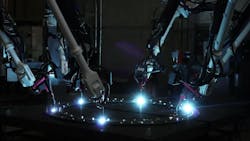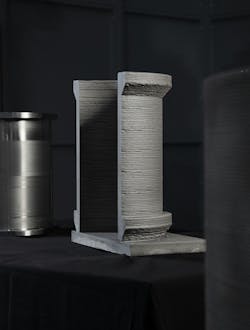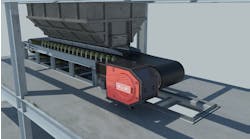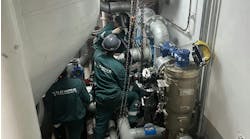OTC 2025: The offshore energy industry needs a mindset shift on manufacturing
By Peter Richards, DEEP Manufacturing
The offshore energy sector is facing a tipping point.
In mature basins around the world, pressure is mounting. Companies are grappling with a perfect storm of escalating costs, political uncertainty, aging infrastructure and intensifying environmental expectations. For supply chains, the message is clear: the playbook of the past won’t be enough to meet the challenges of the future.
For decades, the industry has leaned heavily on traditional manufacturing techniques like forging and casting. While these field-proven methods are well understood, they increasingly fall short of what modern operations demand—long lead times, excessive material waste and limited design flexibility clash with a growing need for agility, cost-efficiency and speed.
Emerging technologies, such as additive manufacturing (AM), offer a compelling opportunity to reimagine how critical components are designed and produced, and the advantages are hard to ignore: faster turnaround times, more sustainable material usage and the ability to produce highly complex parts tailored for the most demanding offshore environments.
Yet despite these clear benefits, the pace of adoption remains slow.
To better understand why, and explore what’s really holding the industry back, DEEP Manufacturing convened two industry roundtables over the past few months, one in Aberdeen and another in Abu Dhabi. These brought together leading energy voices to discuss the future of manufacturing and how to build true supply chain resilience. Eye-opening conversations challenged assumptions and sparked new thinking about how the industry can shift from survival mode to long-term, sustainable growth. The conversations also exposed the core tension in that the sector is caught between recognition of what’s possible and fear of what’s unproven.
Challenges
The issue of cost—more precisely, perceived financial risk—surfaced repeatedly.
One attendee put it bluntly: “The main blocker is, who is going to fund the engineering or initial prototype of whatever new technology is involved?”
Despite mounting evidence of AM’s economic and operational advantages, the fear of taking the first step persists. In an industry that prides itself on safety and reliability, “tried and tested” remains the comfort zone, even when it slows down the process.
Change is accelerating
Confidence, not capability, is the missing piece.
One participant remarked, “The race to be second has been a standard mantra. Often the rush is to be third, fourth or fifth.”
This mindset is no longer viable. In an era of mounting disruption—from geopolitical instability to climate-driven regulatory shifts—offshore supply chains can’t afford to wait.
The good news is that change is accelerating. Stakeholders are beginning to recognize that advanced manufacturing isn't just a technological upgrade but a strategic enabler. Motivated customers, facing urgent operational challenges, are emerging as key drivers of adoption.
The tipping point is here. WAAM and other advanced manufacturing approaches aren’t speculative; they’re delivering results now. The question is whether leaders have the will to rethink risk, adapt industry standards and invest in a future that’s already arriving.
For the offshore industry to not only survive but thrive, it needs more than tools. It needs a mindset shift. That begins with leaders willing to challenge convention, reward innovation and recognize that the cost of staying still may be greater than the cost of change.





